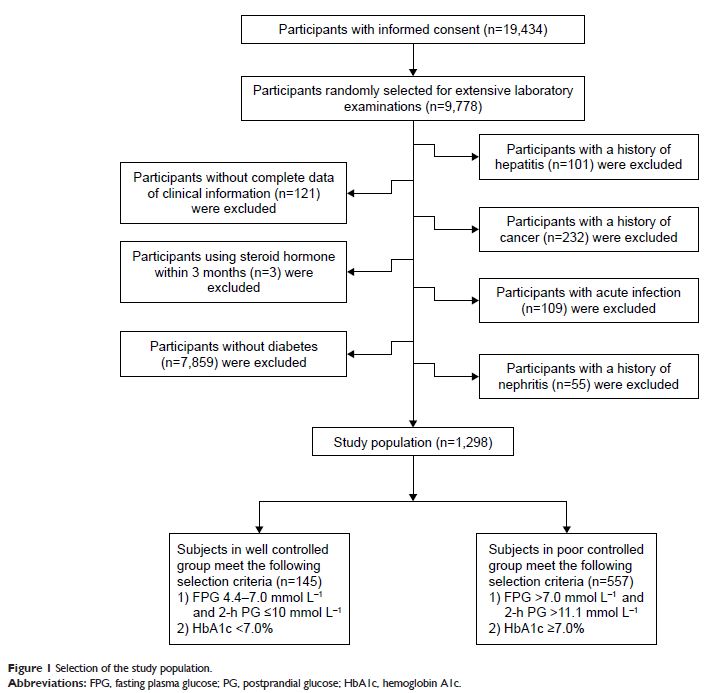108985
论文已发表
注册即可获取德孚的最新动态
IF 收录期刊
- 3.4 Breast Cancer (Dove Med Press)
- 3.2 Clin Epidemiol
- 2.6 Cancer Manag Res
- 2.9 Infect Drug Resist
- 3.7 Clin Interv Aging
- 5.1 Drug Des Dev Ther
- 3.1 Int J Chronic Obstr
- 6.6 Int J Nanomed
- 2.6 Int J Women's Health
- 2.9 Neuropsych Dis Treat
- 2.8 OncoTargets Ther
- 2.0 Patient Prefer Adher
- 2.2 Ther Clin Risk Manag
- 2.5 J Pain Res
- 3.0 Diabet Metab Synd Ob
- 3.2 Psychol Res Behav Ma
- 3.4 Nat Sci Sleep
- 1.8 Pharmgenomics Pers Med
- 2.0 Risk Manag Healthc Policy
- 4.1 J Inflamm Res
- 2.0 Int J Gen Med
- 3.4 J Hepatocell Carcinoma
- 3.0 J Asthma Allergy
- 2.2 Clin Cosmet Investig Dermatol
- 2.4 J Multidiscip Healthc

2 型糖尿病患者红细胞分布宽度与血糖控制不佳的风险
Authors Yin YQ, Ye SS, Wang HB, Li B, Wang AP, Yan WH, Dou JT, Mu YM
Received 3 November 2017
Accepted for publication 27 December 2017
Published 14 February 2018 Volume 2018:14 Pages 265—273
DOI https://doi.org/10.2147/TCRM.S155753
Checked for plagiarism Yes
Review by Single-blind
Peer reviewers approved by Dr Hoa Le
Peer reviewer comments 2
Editor who approved publication: Professor Deyun Wang
Background: The red cell distribution
width (RDW) has been shown to be associated with the incidence and
complications of type 2 diabetes (T2D). However, the relevance of RDW with the
risk of being in poor glycemic control among patients with established T2D is
largely overlooked.
Methods: A total of 702 T2D participants from the
REACTION study were enrolled in this study. Blood routine index, fasting plasma
glucose, hemoglobin A1c and lipid profile data were available for all of the
enrolled population.
Results: The univariate logistic analysis revealed a
significant association between RDW and the risk of being in poor glycemic
control among T2D subjects with an odds ratio (OR) and a 95% confidence
interval (CI) of 0.5 and 0.3–0.8, respectively, for the fourth vs the first
quartile of RDW. The association strengthened after multivariable adjustment
(OR [95% CI]: 0.3 [0.2–0.7]). Interaction and stratified analyses indicated
that this association was seen only among T2D subjects with lower body mass
index and/or serum lipid levels.
Conclusion: T2D patients with higher RDW had significantly
lower risk of being in poor glycemic control. RDW may contribute to risk
assessment for T2D individuals at risk of being in poor glycemic control.
Keywords: type 2
diabetes, red cell distribution width, glycemic control
